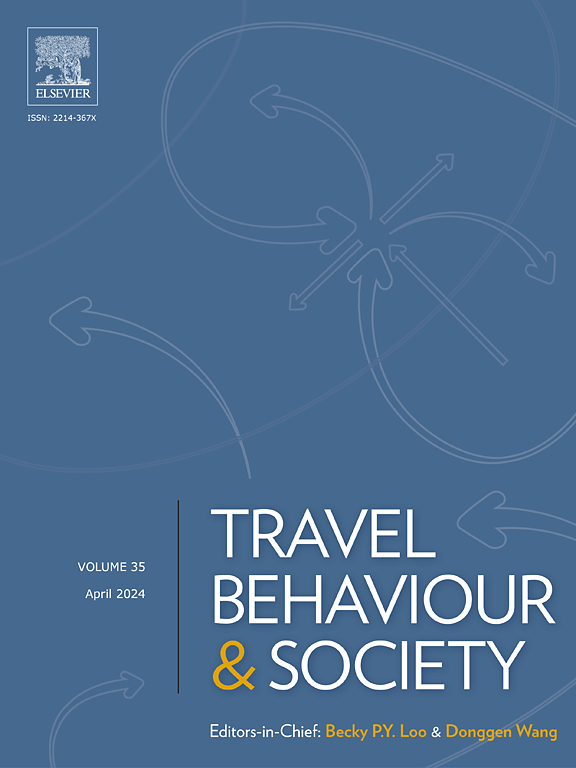通过将空间独立性与多模式数据集相结合,提高交通模式分类基准
IF 5.1
2区 工程技术
Q1 TRANSPORTATION
引用次数: 0
摘要
交通网络是一个复杂的系统,用户流动性的详细数据对其大有裨益。通过聚类或分类方法对用户轨迹进行分析,可以为了解移动模式提供宝贵的信息。利用分类方法从这些轨迹中提取交通模式,可以加深对用户流动性的理解。分类方法的复杂程度各不相同,有些只对几种交通模式进行分类,如步行、跑步、骑自行车和开车。相比之下,其他方法最多可对七种交通模式进行分类,或使用未公开的私人数据集。交通模式分类的一个主要挑战是确保不同方法在不同情况下的可比性。此外,由于没有充分利用现有的标准化基准,结果比较变得更加复杂。就交通模式分类而言,标准化基准必须包含结构化测试框架和进行测试的数据集。本研究介绍了收集数据以开发新的交通模式分类数据集的过程。其目的是通过评估不同交通模式和地理区域的分类方法,从而评估其空间独立性,以增强基准。空间独立性至关重要,因为它能确保分类方法不受地理差异的影响,保持准确性。由于改进后的基准解决了空间独立性问题,并确保了实际部署的稳健性,因此能够对不同地区的方法进行一致的评估,从而提高了可比性。目前文献中的基准检验了三种类型的独立性:用户独立性、位置独立性和时间独立性。我们的测试采用了基于过渡状态矩阵(TSM)和随机森林(RF)算法的多层次方法来进行交通模式分类。结果表明,与原始基准问题相比,多层次方法保持了空间独立性,并实现了更高的准确性。本文章由计算机程序翻译,如有差异,请以英文原文为准。
Enhancing transport mode classification benchmark by integrating spatial independence with multimodal dataset
The transport network is a complex system that benefits from detailed data on user mobility. Analyzing user trajectories through clustering or classification methods can provide valuable insights into mobility patterns. Extracting transport modes from these trajectories using classification methods enhances the understanding of user mobility. The complexity of classification methods varies, with some classifying a few transport modes, such as walking, running, bicycling, and driving. In contrast, others classify up to seven modes or use private, unpublished datasets. A key challenge in transport mode classification is ensuring the comparability of different methods across various contexts. Additionally, comparing results is further complicated by the insufficient use of existing standardized benchmark, which in the case of transport mode classification, must contain a structured testing framework and a dataset on which the testing will be conducted. This research introduces a process for collecting data to develop a new transport mode classification dataset. The goal is to enhance the benchmark by evaluating classification methods across diverse traffic patterns and geographic areas, thereby assessing their spatial independence. Spatial independence is crucial because it ensures that classification methods remain accurate regardless of geographic variations. This improves comparability by enabling consistent evaluation of methods across regions, as the improved benchmark addresses spatial independence and ensures robustness for real-world deployment. The current benchmark in literature examines three types of independence: user, position, and time independence. Our tests employ a multilevel method based on Transition State Matrices (TSMs) and the Random Forest (RF) algorithm for transport mode classification. The results demonstrate that the multilevel method maintains spatial independence and achieves higher accuracy compared to the original benchmark problem.
求助全文
通过发布文献求助,成功后即可免费获取论文全文。
去求助
来源期刊

Travel Behaviour and Society
TRANSPORTATION-
CiteScore
9.80
自引率
7.70%
发文量
109
期刊介绍:
Travel Behaviour and Society is an interdisciplinary journal publishing high-quality original papers which report leading edge research in theories, methodologies and applications concerning transportation issues and challenges which involve the social and spatial dimensions. In particular, it provides a discussion forum for major research in travel behaviour, transportation infrastructure, transportation and environmental issues, mobility and social sustainability, transportation geographic information systems (TGIS), transportation and quality of life, transportation data collection and analysis, etc.
 求助内容:
求助内容: 应助结果提醒方式:
应助结果提醒方式:


